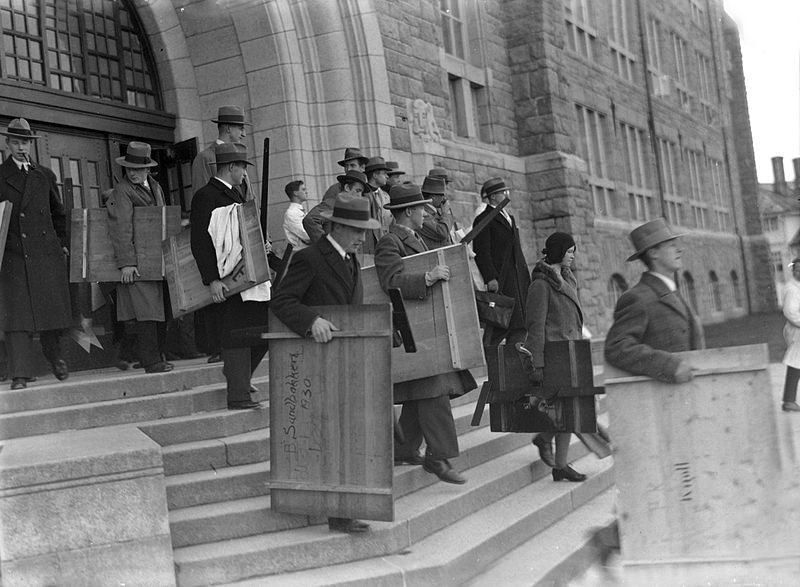There’s a new peripatetic architecture school planned for London: campus-free and with fees set at half the price of other UK schools. Ellie Duffy looks at this innovative new model for education, but asks how much it just reflects the pressures in rising costs and lack of places in studying architecture today.
Change is afoot in UK architecture education. A proposed new school, The London School of Architecture, posits a radical adjustment to the model for post-graduate level education. The plan for the new school has been spearheaded by journalist and educator Will Hunter, who last year orchestrated a research exercise into new models for architecture education, and who has already attracted a strong cast of supporters and advisers. The school’s governing and academic boards include Sarah Ichioka (Director of the Architecture Foundation), Nigel Coates (ex-RCA professor) and Leon van Schaik (RMIT University, Melbourne), while rising architects Deborah Saunt, Niall McLaughlin and Tom Holbrook are amongst its advisors in practice. The plan is to open with the first intake of students in Autumn 2015 and the school is currently calling for partner practices.

What’s radical about the school, at least in today’s UK context, is the way it sidesteps the notion of the bastion of the university campus. Instead it will operate peripatetically to engage directly with the city and with practitioners from architecture and related disciplines. The plan is to create a coordinated, light-footed network of partnerships and associations within which first year students will be employed part-time at host practices, while also engaging in research-focused group study to be shared with the profession. Final-year students will be embedded collectively in a specific London locality (changing every year) from where they will progress from group research at the urban scale to individual final design projects.
An important driver for this model is awareness of the changing state of architecture practice in the UK, where old professional certainties have been eroded and a gulf has arisen between the theoretical preoccupations within schools and evolving realities of practice. The kind of reality that means, for example, that architects are increasingly likely to be operating collaboratively across a wide range of disciplines as much as focusing on single buildings.
But another driver is undoubtedly cost. UK institutions have recently become a prolific providers of education for students from around the world, particularly in the fields of art and design. And at the moment demand looks only set to increase, with London’s mayor recently issuing an open invitation to Chinese students to study design in the city.
While the availability of places to study subjects like architecture has risen considerably over the last 15 years, so has the cost of studying. Until the late 1990s the state paid tuition fees for UK residents, and many students were also eligible for non-refundable grants towards their living expenses. In 1998 capped tuition fees were introduced for the first time. In 2012 the caps to fees were removed – meaning that universities are now required to charge local students up to £9,000 per annum. In addition students must fund their living expenses, which in an expensive city like London is a particularly daunting prospect.

There are around 33,000 registered architects in the UK (up to 30 percent of whom have been estimated to be unemployed or underemployed) but there are also currently 15,000 students in the process of receiving architecture education. The average debt of UK architecture students now in education is estimated to exceed £100,000 on graduation. This is particularly sobering considering that the average – not starting – salary for an architect in the UK is reported to be £40–£45,000 (for a 47-hour week). We’re dangerously close to a situation where practising architecture could once again become the preserve of a wealthy elite.
Something has to give, and perhaps an important part of the answer lies with this new school. With proposed annual fees set at half the standard rate (£4,500) and a structure that allows students to earn at least some of their keep as they study, it is hoped that the LSA will ensure that the architectural profession in the UK retains access to the widest pool of talent – something it will undoubtedly need in order to be able to thrive in the future.
The good news is that there is some precedent in the culture of British architecture for encouraging the ablest rather than simply the wealthiest students. In 1847 the UK’s first school of architecture – The Architectural Association – was established by a group of students fed up with the iniquities of articled pupillage, a system in which apprentices were required to secure large premiums to pay for the experience of working for a private architect. Thanks to a group of disgruntled students almost 170 years ago, a fairer and more professional system of education was established. Let’s hope that the LSA’s attempt to forge a more functional relationship between practice and academia will have a similarly positive legacy.
– Ellie Duffy is a director of Duffy, London.
www.the-lsa.org





